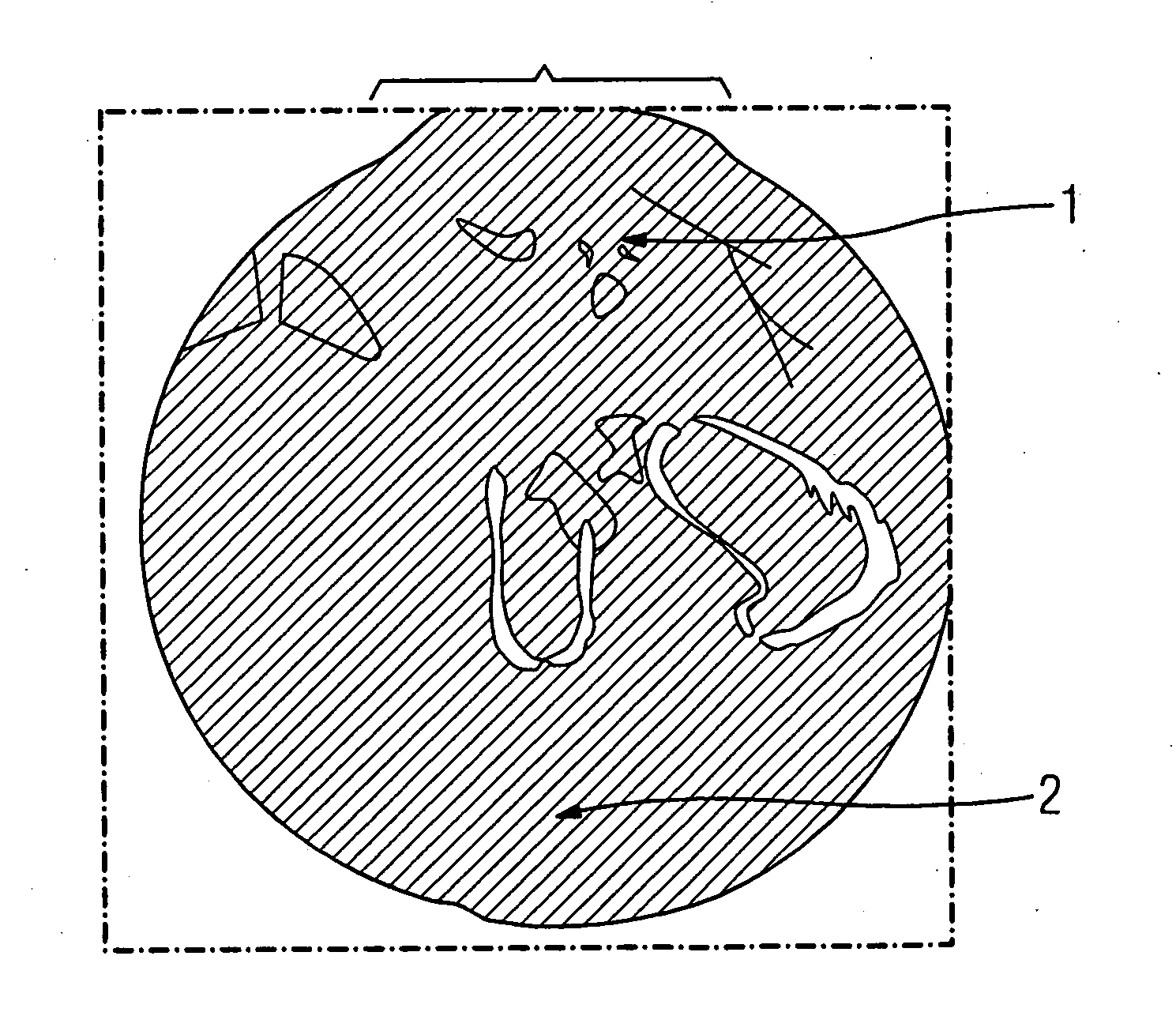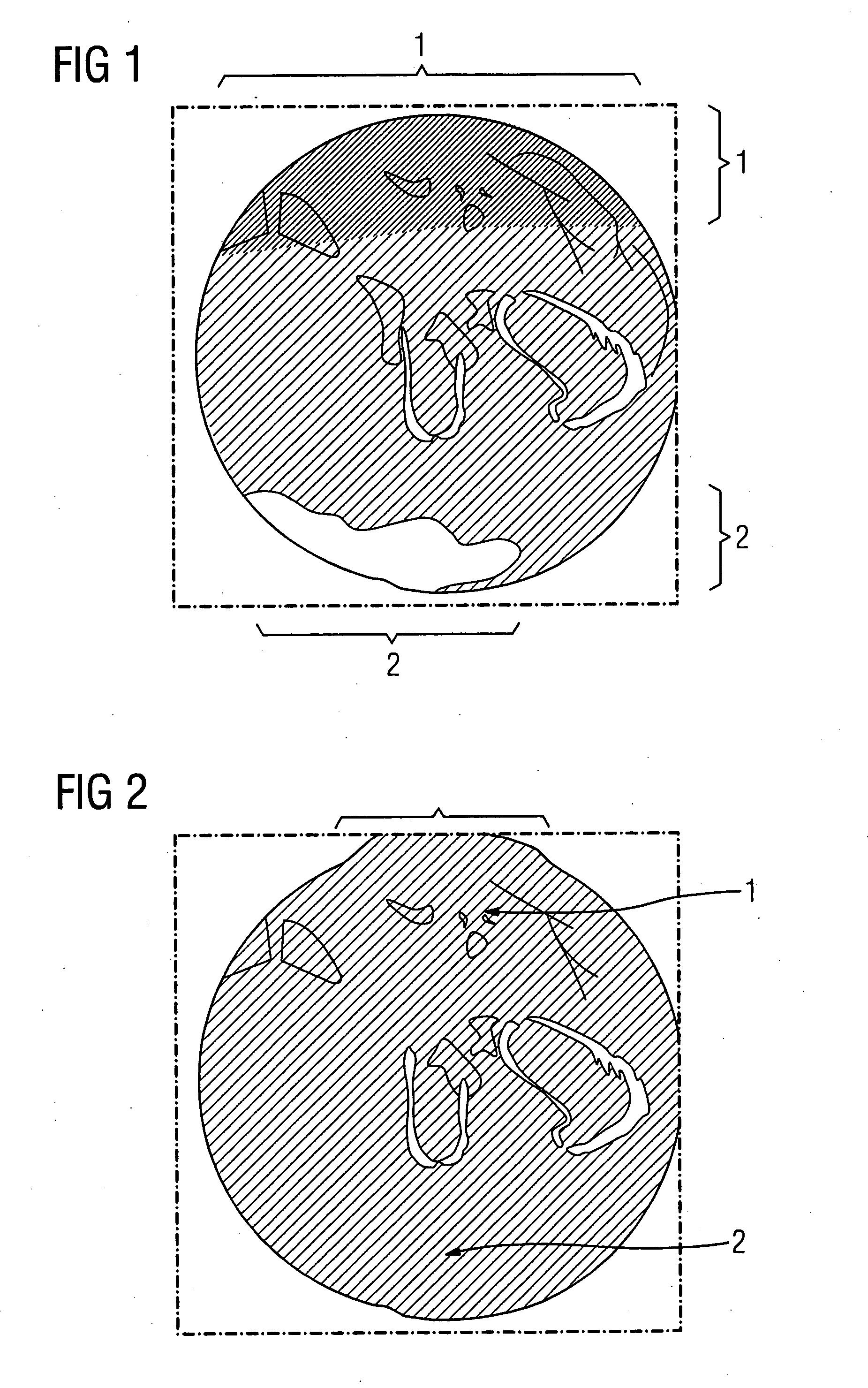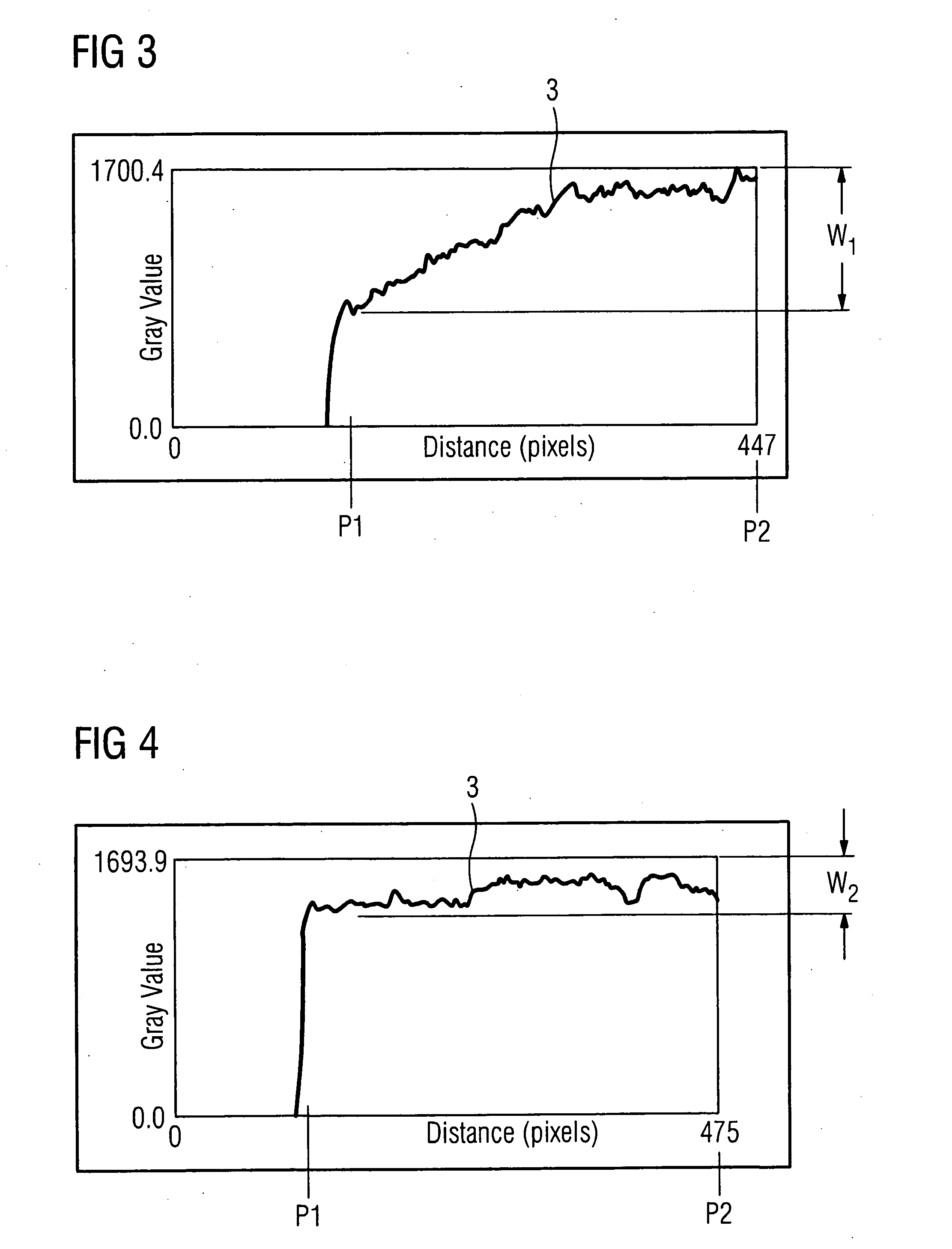Method for reducing cupping artifacts in cone beam CT image data sets
a technology of image data and cupping artifacts, applied in image enhancement, image analysis, instruments, etc., can solve the problems of insufficient system hardware performance, inability to fully realize viable correction, and insufficient water normalization, etc., to reduce cupping artifacts in cone beam ct image data sets, simple manner, and without large hardware expenditure
- Summary
- Abstract
- Description
- Claims
- Application Information
AI Technical Summary
Benefits of technology
Problems solved by technology
Method used
Image
Examples
Embodiment Construction
[0011] Two cupping artifacts, namely a darkening of the upper region 1 and a brightening of the lower subject region 2, are present the axial slice of a human pelvic region in FIG. 1. A small windowing to increase contrast is not practically possible in these regions, in particular in the region 2. However, a distinct contrast increase in the cited subject regions 1 and 2 is achieved by the application of a harmonization method (FIG. 2).
[0012] The cupping artifact of the subject region 2 is explained in FIG. 3 using an image line of an area detector. In the diagram, the removal (in pixels) is plotted on the abscissa and the grey value is plotted on the ordinate. It is clearly seen that a constant component is superimposed on the actual shortwave image signal 3. If it is now desired to spread the subject region or segment of the image line proceeding from the position P1 to the position P2 on the grey level scale of a monitor, only a relatively large grey level window W1 is availabl...
PUM
 Login to view more
Login to view more Abstract
Description
Claims
Application Information
 Login to view more
Login to view more - R&D Engineer
- R&D Manager
- IP Professional
- Industry Leading Data Capabilities
- Powerful AI technology
- Patent DNA Extraction
Browse by: Latest US Patents, China's latest patents, Technical Efficacy Thesaurus, Application Domain, Technology Topic.
© 2024 PatSnap. All rights reserved.Legal|Privacy policy|Modern Slavery Act Transparency Statement|Sitemap



